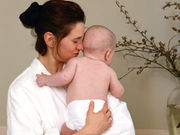Practice is increasingly common, but no evidence of benefit, or indication that procedure is safe
FRIDAY, Feb. 26, 2016 (HealthDay News) — The increasingly common practice of “vaginal seeding” in infants born by cesarean section is not without risks, according to an editorial published online Feb. 23 in The BMJ.
Aubrey J. Cunnington, B.M.B.Ch., Ph.D., from Imperial College London, and colleagues discuss the increasingly common practice of vaginal seeding, involving use of a gauze swab to transfer maternal vaginal fluid and vaginal microbiota onto an infant born by cesarean section. Vaginal seeding might restore the microbiota of infants born by cesarean section to a more “natural” state.
The authors note that delivery by cesarean section is associated with increased risk of certain diseases, which are also associated with alterations in the microbiota. Although the human microbiota can be manipulated to benefit health, there is currently no clear evidence of benefit for vaginal seeding. Newborns may develop severe infections from exposure to vaginal commensals and pathogens that the mother may carry, including group B streptococcus, herpes simplex virus, Chlamydia trachomatis, and Neisseria gonorrhoeae. These pathogens might also be transmitted on a vaginal swab. In the absence of evidence of benefit or guidelines to ensure procedural safety, the authors do not recommend performing vaginal seeding.
“Parents should be advised to mention that they performed vaginal seeding if their baby becomes unwell because this may influence a clinician’s assessment of the risk of serious infection,” the authors write.
Full Text
Copyright © 2016 HealthDay. All rights reserved.








